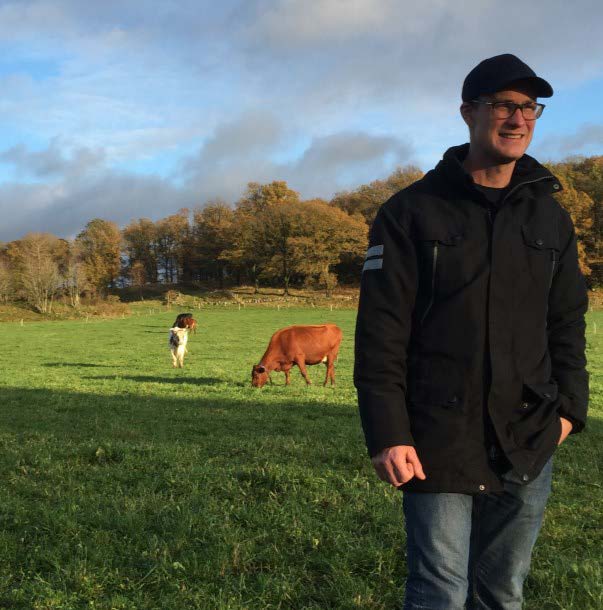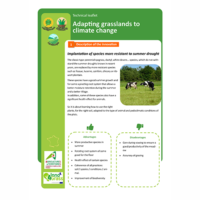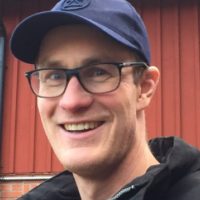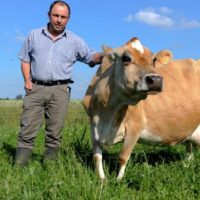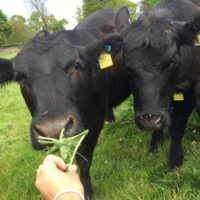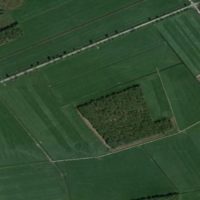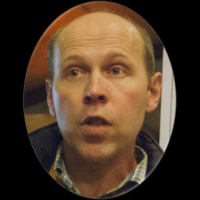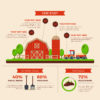Description
Background
Stommen Farm in Köinge, which has 85 organic dairy cows, lies in a region of south-west Sweden with a mild climate and average rainfall of 1200 mm per year. The farm has been organically managed for the past two decades and had been extended with land that was previously leased from the church. Optimal use of grassland is the key to successful farm finances, organic production and running the farm with the limited labour available. The goal is to develop a financially robust system.
Detailed description
Maximum use of resources is the goal on Stommen Farm. Grazing is fundamental in organic milk production. The farmer controls calving to obtain the maximum number of grazing animals in spring and to have the cows milking in the right phase to use pasture optimally. The aim is to have only autumn calving, between 1 October and 15 January. Heifers and purebred cows calve first, to get recruitment heifers started early. It is optimal for the main cows to calve by 15 November, at which time they have been grazed dry for two months and the newly calved heifers have acclimated to the milking routine. Cull cows are removed in December, but are milked until then. Between 1 January and 1 August, the barn or the grazing is at full capacity. During the first months of lactation the cows are in the barn, while they are farther along the lactation curve when they start grazing. There is often a dip in grass production in July, at which time the farmer used to provide extra silage so that the cows did not lose too much milk. He no longer does this.
With autumn calving, the work is distributed more evenly over the year. In autumn and winter there is more work in the dairy barn, with calving and then insemination up to 15 April. In spring–summer, the farmer ‘only’ has to milk the cows and then let them out to graze. Spring tillage, following by forage harvesting, means more outdoor work at that time. The farm has one employee and the intention is for her and the farmer to be able to take time off for holidays in the summer.
Recruitment heifers (20–30), which are born in October, are six months old when they are let out on grazing for the first time. At that age, they are old enough to thrive well on grazing without supplementary concentrate. They calve at 24 months and the farmer expects these heifers to spend 11 months out on grazing before their first calving. Compared with a heifer born in April, which will spend 3 months out before calving, this is a major difference, especially since the Stommen Farm leases an barn from a neighbour for rearing the heifers.
In August–September, the cows are dried off and allowed to graze the regrowth on the temporary grassland. Since they do not need to be brought in for milking, the degree of trampling decreases. Autumn is often a difficult period in this regard, as it generally gets more rain. On the other hand, it is very advantageous to have the cows grazing then. The aim is to keep them out on grazing until 20 October.
It is important to keep grassland management simple, to avoid missing the growth potential. The cows are let out on grazing in the middle of April in order to encourage tillering of the grass and keep the growth under control so that the quality does not decline. When the milk level in the tank starts rising, the cows are put on 24-h grazing and indoor feeding ceases. The current aim is to change paddock twice a day during the summer. The farmer assesses grass growth by walking the fields once a week to monitor development. Sometimes, he clips some samples to determine herbage biomass and dry matter content. It is encouraging to see that growth doubles every week at the peak of the season, to reach a maximum growth rate of 1600 kg dry matter/ha. It is also important to take to decision to harvest forage for silage when growth exceeds 1600 kg dry matter/ha. The farm does not have much machinery, but it is important to have a mower for topping individual paddocks when the grass growth is high or to control some weeds, e.g. docks.
Results
In the organic production system on the farm, grazing gives a good financial return. Access to labour determines how farm work must be distributed throughout the year. On Stommen Farm, the concentrated calving is an advantage. It is also an advantage to have an empty calf house so that it can be sanitised properly, resulting in healthier calves.
The key factor is for the grassland to produce as much as possible and to keep enough animals to exploit this forage production. In the past grazing season, the cows on Stommen Farm produced 250 tons of milk in six months. This is equivalent to 1816 Euro per ha.
Adoption criteria
The innovation works best as a way to use the labour available on a particular farm. Concentrated calving results in a peak in labour requirement in late autumn, but a lower requirement at other times of the year. The system levels out the peak workloads between summer and winter.
Organic production is the key to profitability in the system. Having highly valuable forage means that the profit from optimising production is greater. With more grazing, the need for owning machinery decreases. Contract machinery is an advantage in this regard.
Of course, having grazing as the cornerstone requires a farm to have good natural conditions for grassland. Stommen Farm’s location in western Sweden, with normally good rainfall and water-retaining soils, is important. Good farm layout is also an advantage. Overall, however, the farmer must be very interested in grassland management for this system to work. Stommen Farm has a tried and tested system of paddock grazing and timing, with complementary mowing.
Future prospects
Streamlining the system is a constant ambition and driving force. Water supply to the animals is a practical issue that is still being improved. The aim is to have water in every paddock, to avoid the need to drive out with tankers. The farmer is striving to achieve simplicity in the system. Professional advice on grazing management is always needed.
Coordinating with nature in this way requires constant vigilance. It involves matching growth with production and not letting it run out of control from that ‘magic day’ when everything starts to grow. Interest and monitoring are important for success.

